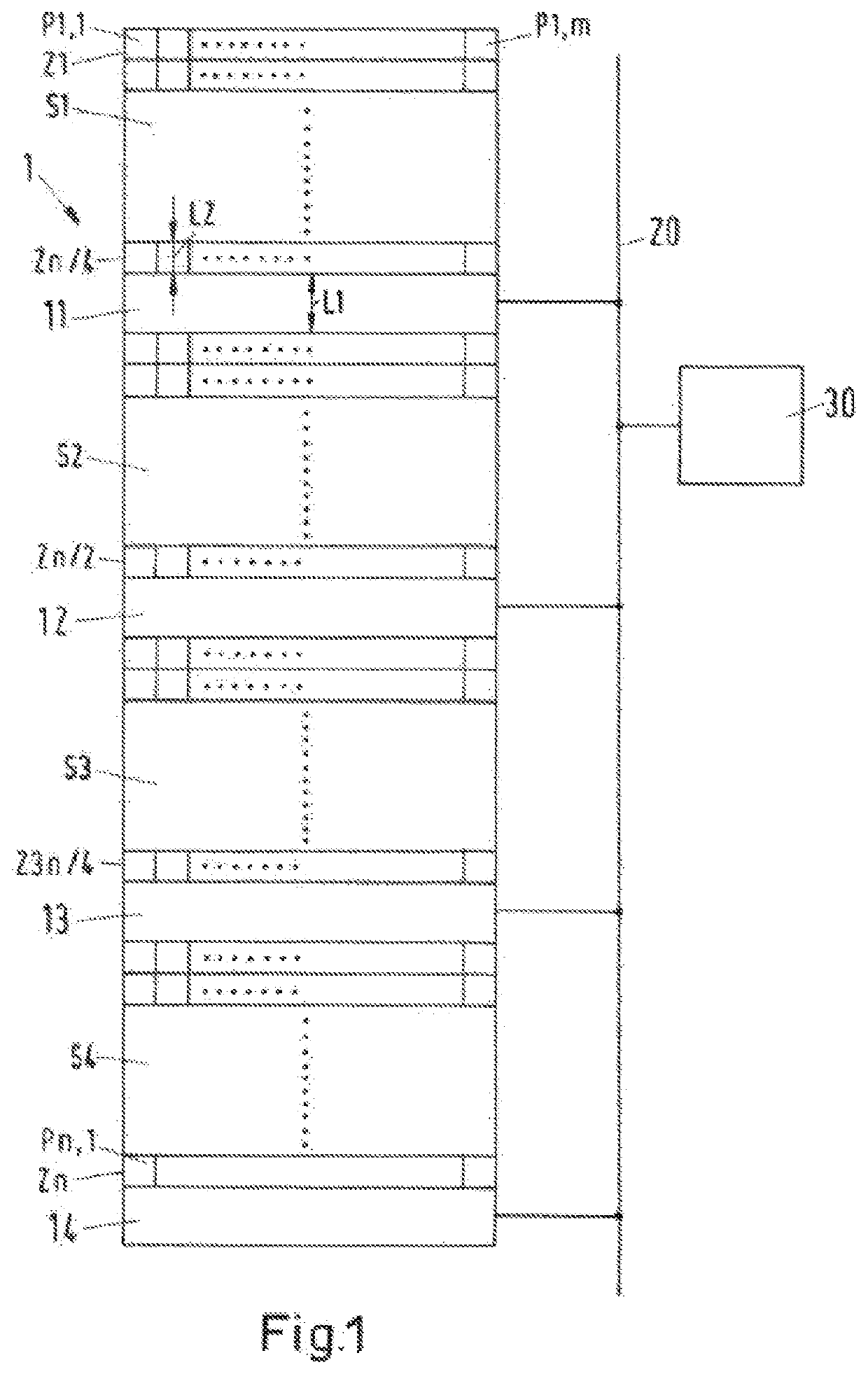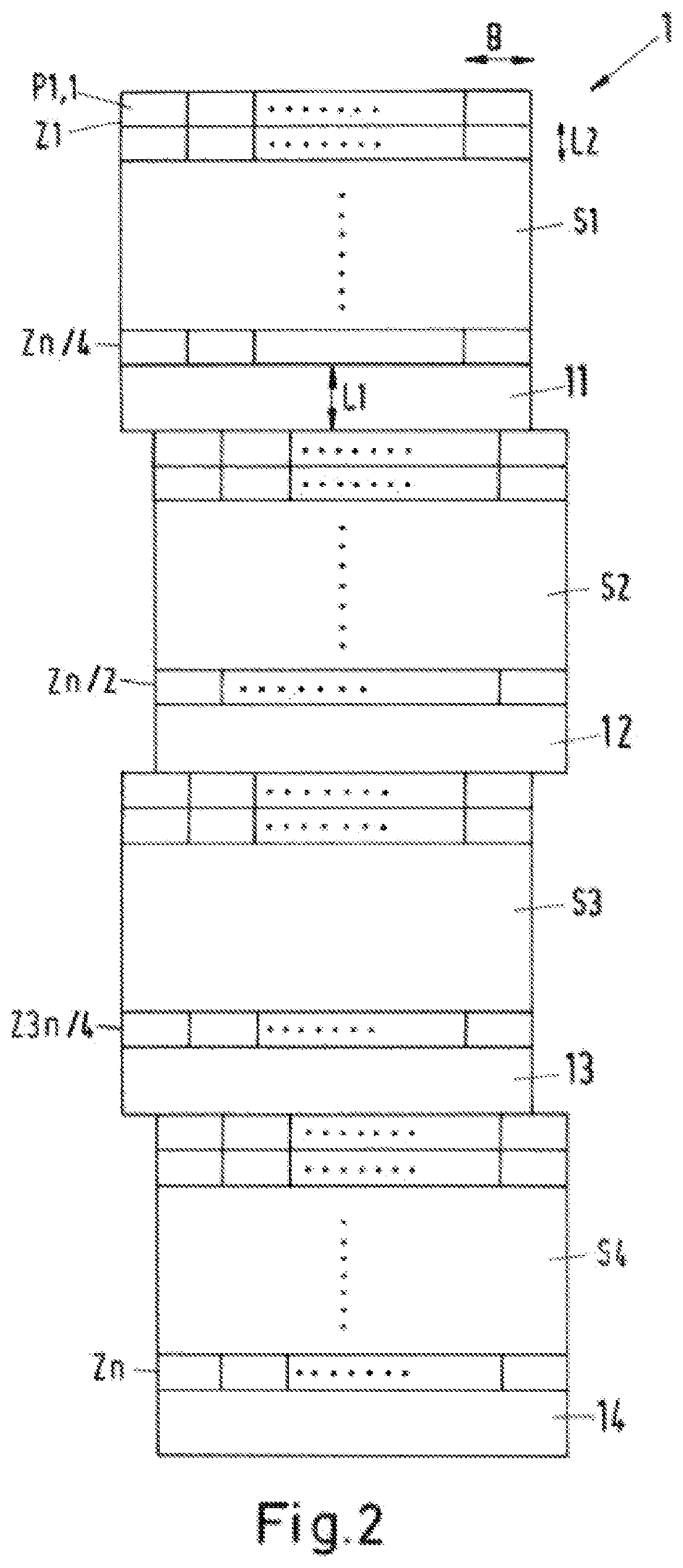Tdi line detector
- Summary
- Abstract
- Description
- Claims
- Application Information
AI Technical Summary
Benefits of technology
Problems solved by technology
Method used
Image
Examples
Embodiment Construction
[0016]FIG. 1 schematically depicts a TDI line detector 1, which has a total of n lines Z with m pixels P. In this case, for example, P1,1 is the first pixel P of the first line, Z1 is the first line, and Zn is the nth line. The TDI line detector 1 in the example shown is divided into four submodules S1-S4, which each have n / 4 lines Z. The size of all of the pixels P is the same in all of the lines Z in all of the submodules S1-S4. The respective last line Z of a submodule S1-S4 is associated with a set of readout electronics 11-14 associated with the submodule S1-S4. The readout electronics 11-14 are embodied for example as shift registers and are connected via at least one bus system 20 to an evaluation unit 30. In this case, it is also possible for each set of readout electronics 11-14 to be connected via a separate bus system to the evaluation unit 30 or alternatively to a mass storage device.
[0017]The length L1 of the readout electronics 11-14 in this case is an integral multipl...
PUM
 Login to View More
Login to View More Abstract
Description
Claims
Application Information
 Login to View More
Login to View More - R&D
- Intellectual Property
- Life Sciences
- Materials
- Tech Scout
- Unparalleled Data Quality
- Higher Quality Content
- 60% Fewer Hallucinations
Browse by: Latest US Patents, China's latest patents, Technical Efficacy Thesaurus, Application Domain, Technology Topic, Popular Technical Reports.
© 2025 PatSnap. All rights reserved.Legal|Privacy policy|Modern Slavery Act Transparency Statement|Sitemap|About US| Contact US: help@patsnap.com


